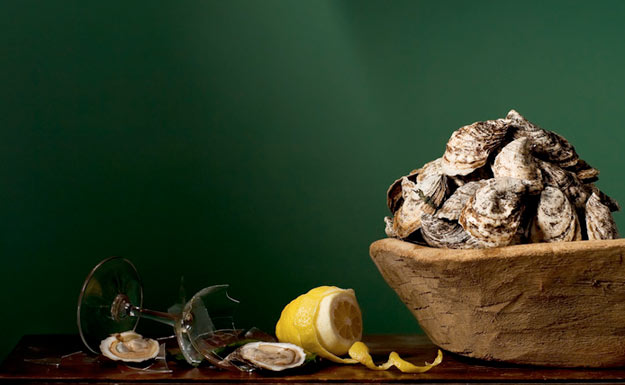halves-pairs
‘A hidden connection is stronger than an obvious one.’ –Heraclitus

Sybil accounts are fake identities created to unfairly increase the power or resources of a single malicious user. Researchers have long known about the existence of Sybil accounts in online communities such as file-sharing systems, but have not been able to perform large scale measurements to detect them or measure their activities. In this paper, we describe our efforts to detect, characterize and understand Sybil account activity in the Renren online social network (OSN). We use ground truth provided by Renren Inc. to build measurement based Sybil account detectors, and deploy them on Renren to detect over 100,000 Sybil accounts. We study these Sybil accounts, as well as an additional 560,000 Sybil accounts caught by Renren, and analyze their link creation behavior. Most interestingly, we find that contrary to prior conjecture, Sybil accounts in OSNs do not form tight-knit communities. Instead, they integrate into the social graph just like normal users. Using link creation timestamps, we verify that the large majority of links between Sybil accounts are created accidentally, unbeknownst to the attacker. Overall, only a very small portion of Sybil accounts are connected to other Sybils with social links. Our study shows that existing Sybil defenses are unlikely to succeed in today’s OSNs, and we must design new techniques to effectively detect and defend against Sybil attacks.
images { 1. Vitaly Virt | 2. Melvin Sokolsky }
You know why, mister? Cause you drove a Hyundai to get here tonight, I drove an eighty thousand dollar BMW. *That’s* my name.

{ Left: Motorola logo, 1955 | Right: Wyldewood Golf & Country Club logo, 1963 }
The image of something past or future, that is, of a thing which we regard as in relation to time past or time future, to the exclusion of time present, is, when other conditions are equal, weaker than the image of something present

At some point, the Mongol military leader Kublai Khan (1215–1294) realized that his empire had grown so vast that he would never be able to see what it contained. To remedy this, he commissioned emissaries to travel to the empire’s distant reaches and convey back news of what he owned. Since his messengers returned with information from different distances and traveled at different rates (depending on weather, conflicts, and their fitness), the messages arrived at different times. Although no historians have addressed this issue, I imagine that the Great Khan was constantly forced to solve the same problem a human brain has to solve: what events in the empire occurred in which order?
Your brain, after all, is encased in darkness and silence in the vault of the skull. Its only contact with the outside world is via the electrical signals exiting and entering along the super-highways of nerve bundles. Because different types of sensory information (hearing, seeing, touch, and so on) are processed at different speeds by different neural architectures, your brain faces an enormous challenge: what is the best story that can be constructed about the outside world?
The days of thinking of time as a river—evenly flowing, always advancing—are over. Time perception, just like vision, is a construction of the brain and is shockingly easy to manipulate experimentally. We all know about optical illusions, in which things appear different from how they really are; less well known is the world of temporal illusions. When you begin to look for temporal illusions, they appear everywhere.
photos { Henri Cartier-Bresson | Ruben Natal-San Miguel }
‘The most popular software for writing fiction isn’t Word. It’s Excel.’ –Brian Alvey

Four and three and two and one, what up! And when I’m on the mic, the suckers run (Word!)
images { 1 | 2. Magic Rays May Signal New Laws of the Universe }
The cradle rocks above an abyss, and common sense tells us that our existence is but a brief crack of light between two eternities of darkness
Two new elements have been added to the periodic table after a three-year review by the governing bodies of chemistry and physics.
The elements are currently unnamed, but they are both highly radioactive and exist for less than a second before decaying into lighter atoms.
In recent years, there have been several claims by laboratories for the discovery of new chemical elements at positions 113, 114, 115, 116 and 118 on the periodic table. The working party concluded that elements 114 and 116 fulfilled criteria for official inclusion in the table. The others, as yet, do not.
The new elements have temporary titles of ununquadium and ununhexium.
And Muriel, I still hit all the same old haunts, and you follow me wherever I go
It has become harder to escape feeling like a tourist. Part of this is because cities are becoming more indistinguishable. In his essay “The City in the Age of Touristic Reproduction” philosopher Boris Groys notes how the local distinctions that once made foreign destinations exotic — the architectural or culinary peculiarities, the unique monuments, the cultural idiosyncrasies — have all become exportable signifiers, rapidly transmissible around the globe. This dissemination of local ideas, Groys argues, establishes a worldwide uniform city in places that were once distinct.
image { Olivier Laric, Versions, 2010 }
bonus (1:04 mark):
‘History is a set of lies that people have agreed upon.’ –Napoleon Bonaparte

We modify our own opinions in line with what other people think, especially our friends and peers.
A problem for psychologists investigating the effect of peer influence is that it can be tricky to tell whether people are simply acquiescing in public, for show, or if their attitudes really have changed.
A new study by a team of psychologists at Harvard University has used an innovative mix of behavioural and brain-scan methods to show that peer influence really can change how people value something, in this case the attractiveness of a face.
photos { William Klein, Man Foreground, Woman Behind, 1955 | Right: Man Ray, Self-Portrait with Meret Oppenheim, 1933 }
‘Why must we proclaim so loudly and with such intensity what we are, what we want, and what we do not want?’ –Nietzsche

When adding up the benefits from three centuries of species discoveries, I’m tempted to start, and also stop, with Sir Hans Sloane.
A London physician and naturalist in the 18th century, he collected everything from insects to elephant tusks. And like a lot of naturalists, he was ridiculed for it, notably by his friend Horace Walpole, who scoffed at Sloane’s fondness for “sharks with one ear, and spiders as big as geese!” Sloane’s collections would in time give rise to the British Museum, the British Library, and the Natural History Museum, London.
Not a bad legacy for one lifetime. But it pales beside the result of a collecting trip to Jamaica, on which Sloane also invented milk chocolate.
We still scoff at naturalists today. We also tend to forget how much we benefit from their work. (…) Large swaths of what we now regard as basic medical knowledge came originally from naturalists.
photos { Simen Johan | Roxanne Jackson }
For not myself did I see therein, but a devil’s grimace and derision

{ 1. Grant Willing | 2. Jun Iseyama }
Ace in the face or what?

Begotten is a 1991 experimental/horror film, directed and written by E. Elias Merhige. The film deals with the story of Genesis. But as Merhige revealed during Q&A sessions, its primary inspiration was a near death experience he had when he was 19, after a car crash. The film features no dialogue, but uses harsh and uncompromising images of human pain and suffering to tell its tale. It also has no music, instead, the movie is accompanied by the sounds of crickets, and occasionally other sound effects such as grunting and thrashing. Plot The film was shot on black and white reversal film, and then every frame was rephotographed for the look that is seen. The only colors are black and white, with no half-tones. The look is described in the trailer as “a Rorschach test for the eye”. Merhige said that for each minute of original film, it took up to 10 hours to rephotograph it for the look desired. The film opens with a robed, profusely bleeding “God” disemboweling himself, with the act ultimately ending in his death. A woman, Mother Earth, emerges from his remains, arouses the body, and impregnates herself with his semen. |

Antropophagus, released in the UK as Anthropophagous: The Beast and in the US as Anthropophagus: The Grim Reaper, is a 1980 Italian language horror film, directed by Joe D’Amato. Plot A group of tourists arrive on a small Greek island, only to find it almost completely deserted. It seems that the only person still alive there is a blind girl who does not know what has happened to the rest of the island’s town, but is terrified of a man who she describes as smelling of blood. (…) They find a diary inside an abandoned mansion, which tells of a man who was shipwrecked with his wife and child. In order to survive, the man was forced to eat his dead family. This act drove him insane and he went on to slaughter the rest of the island’s inhabitants. (…) Almost the entire group is killed until only a few remain, but one of the survivors manages to overpower him and stab him with a pick axe to the stomach, and before he dies, in one final act of insanity, he attempts to devour himself, by chewing violently on his own intestines. |
{ Thanks Caitie for the inspiring discussion }
It’s something you want, 745 chrome spinning

{ 1. Luke Stephenson | 2. Romain Laurent | In Western Europe, military bows became obsolete during the C16th as firearms evolved. But in China, guns and bows coexisted for almost a millennium. Now one scientist thinks he knows why. | The Physics arXiv Blog | full story }
Such is the language of all fish

{ 1. issuu | 2. Jaimie Warren }













